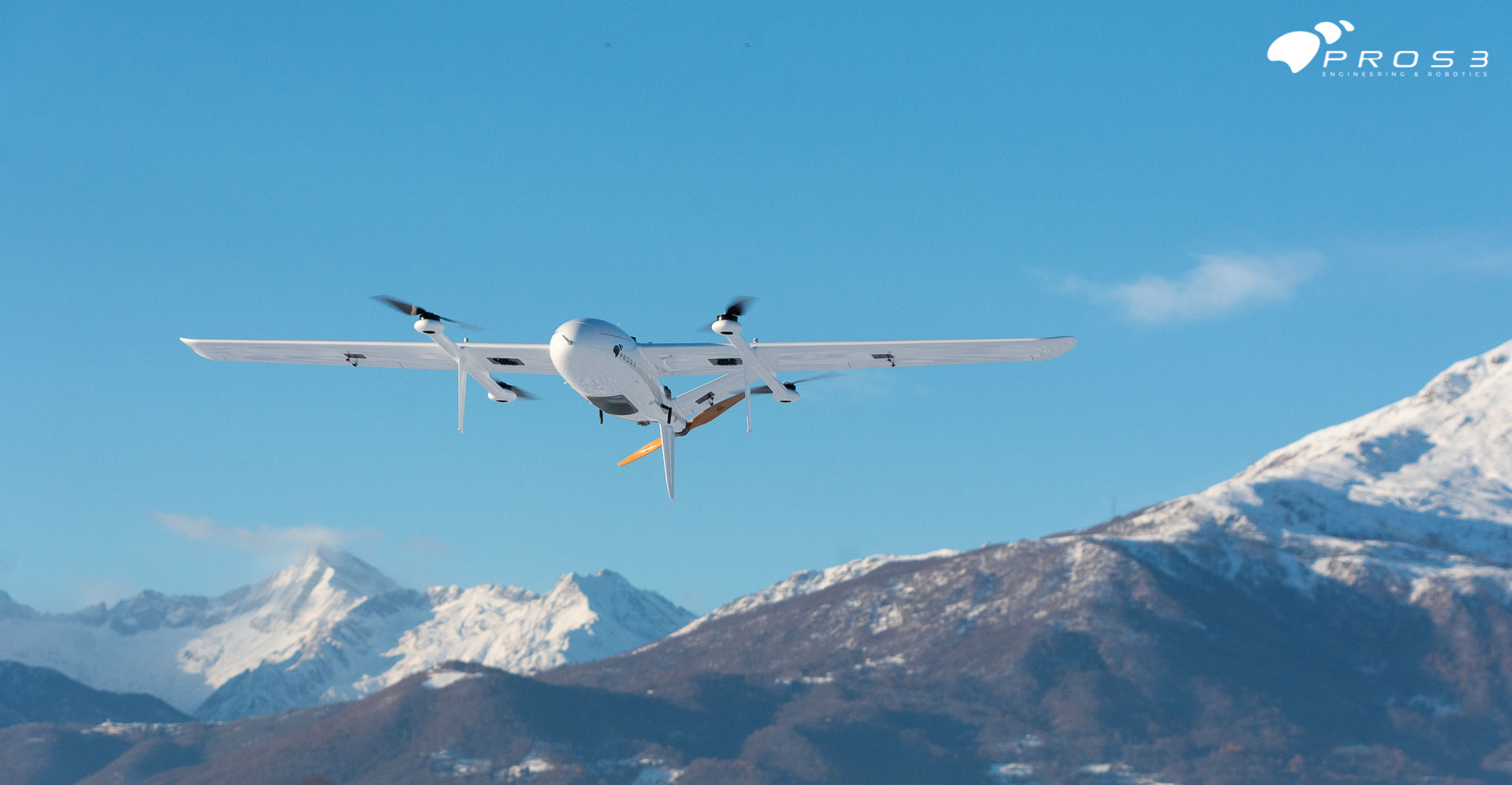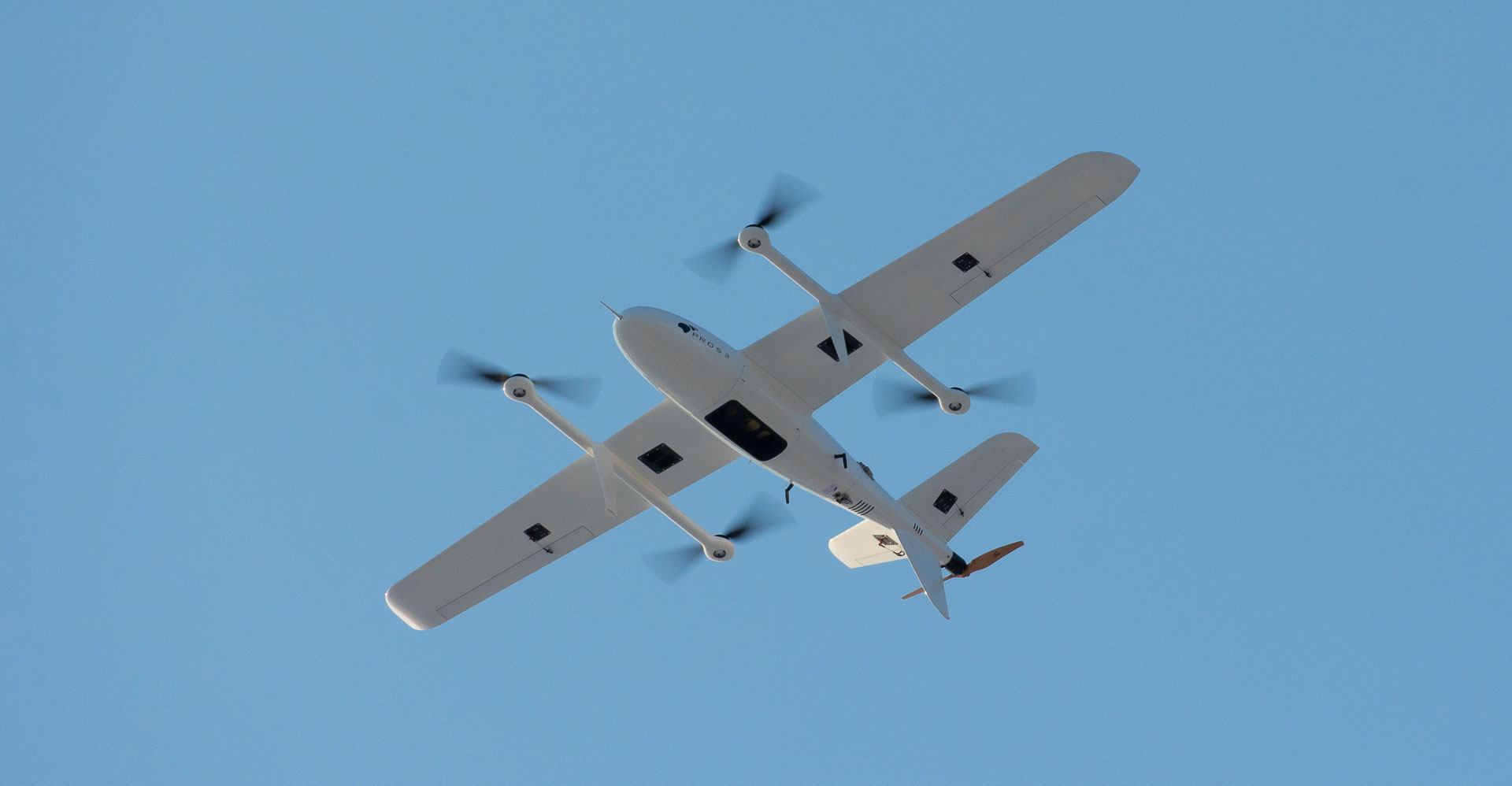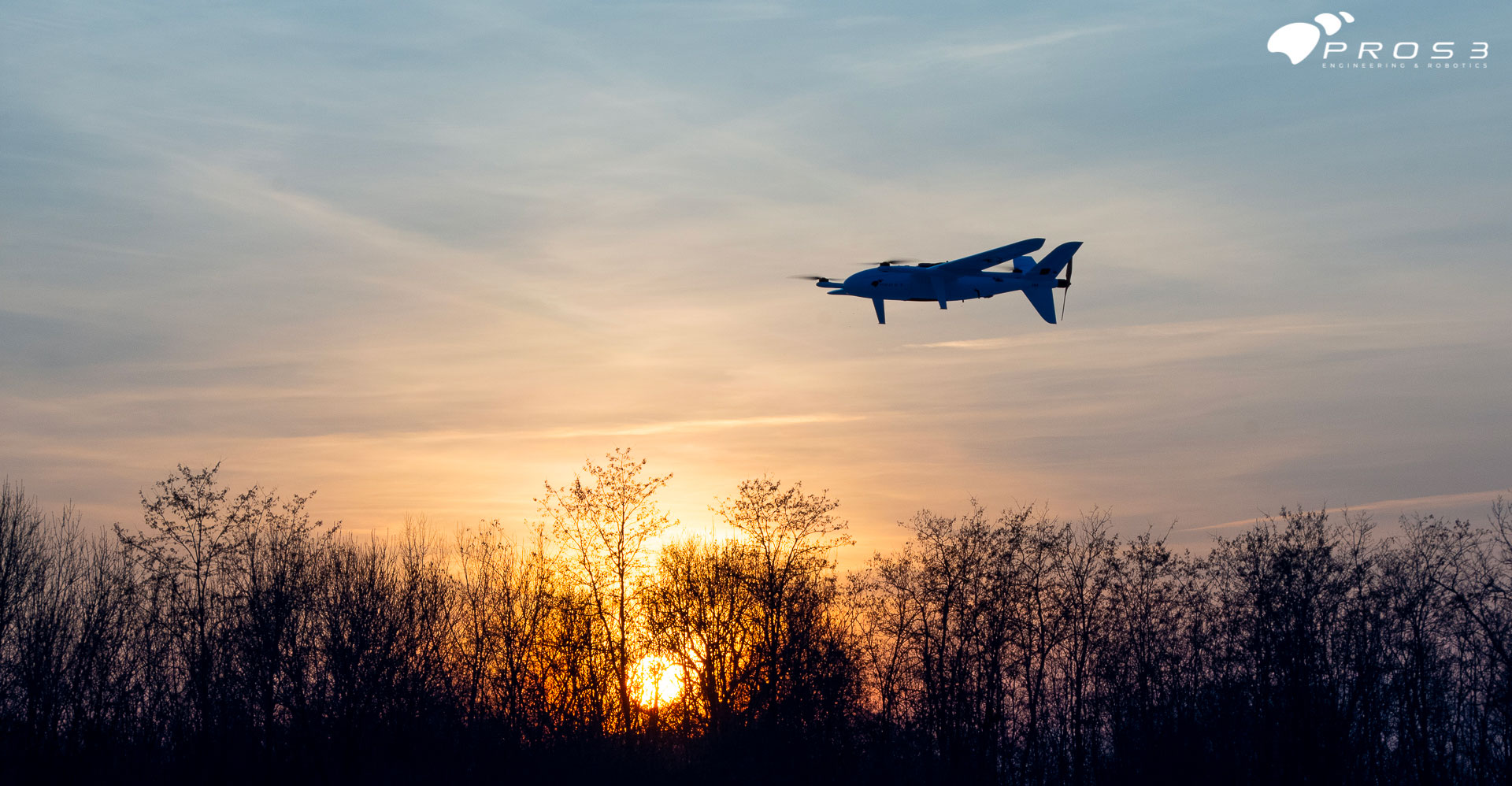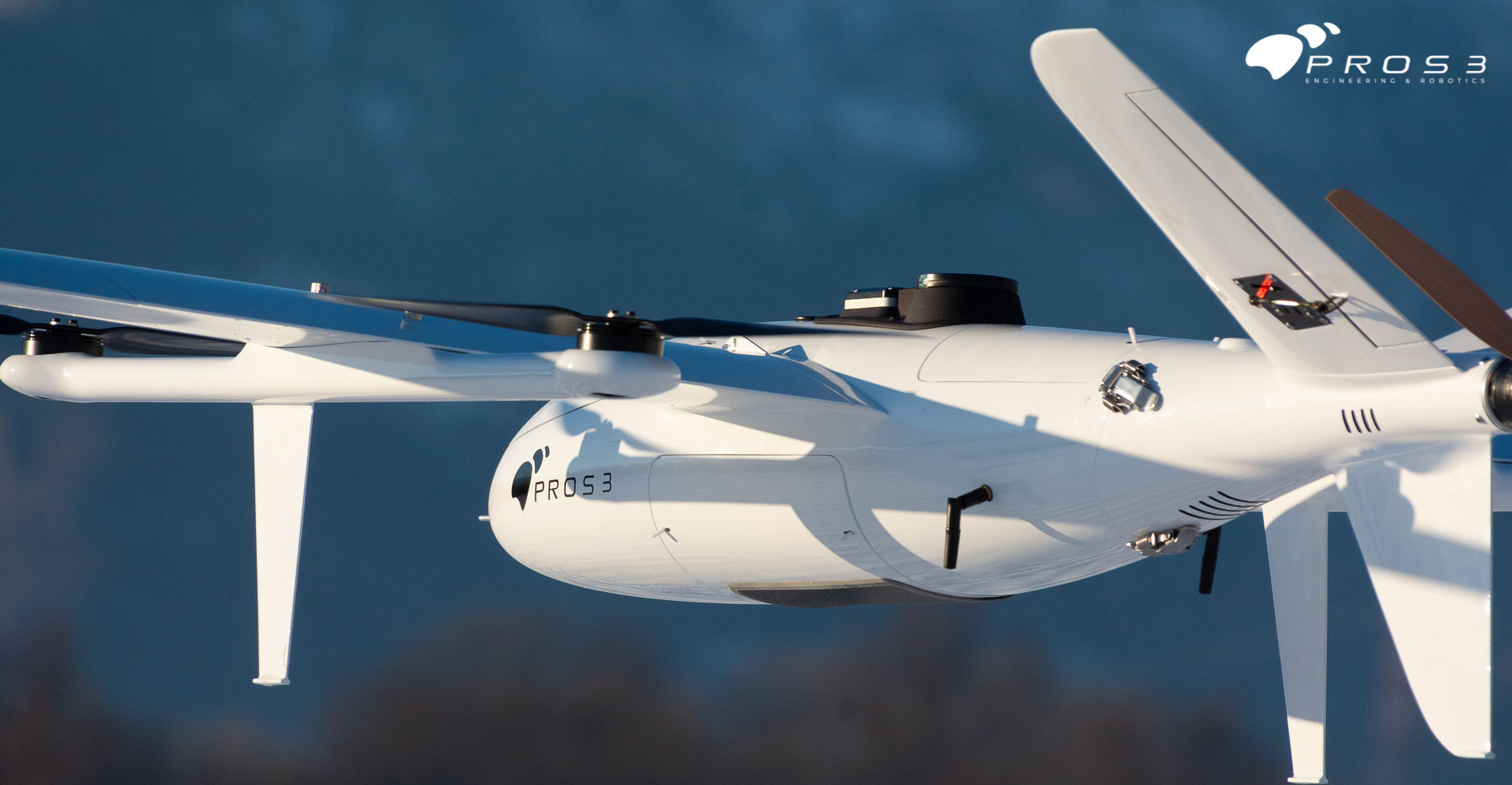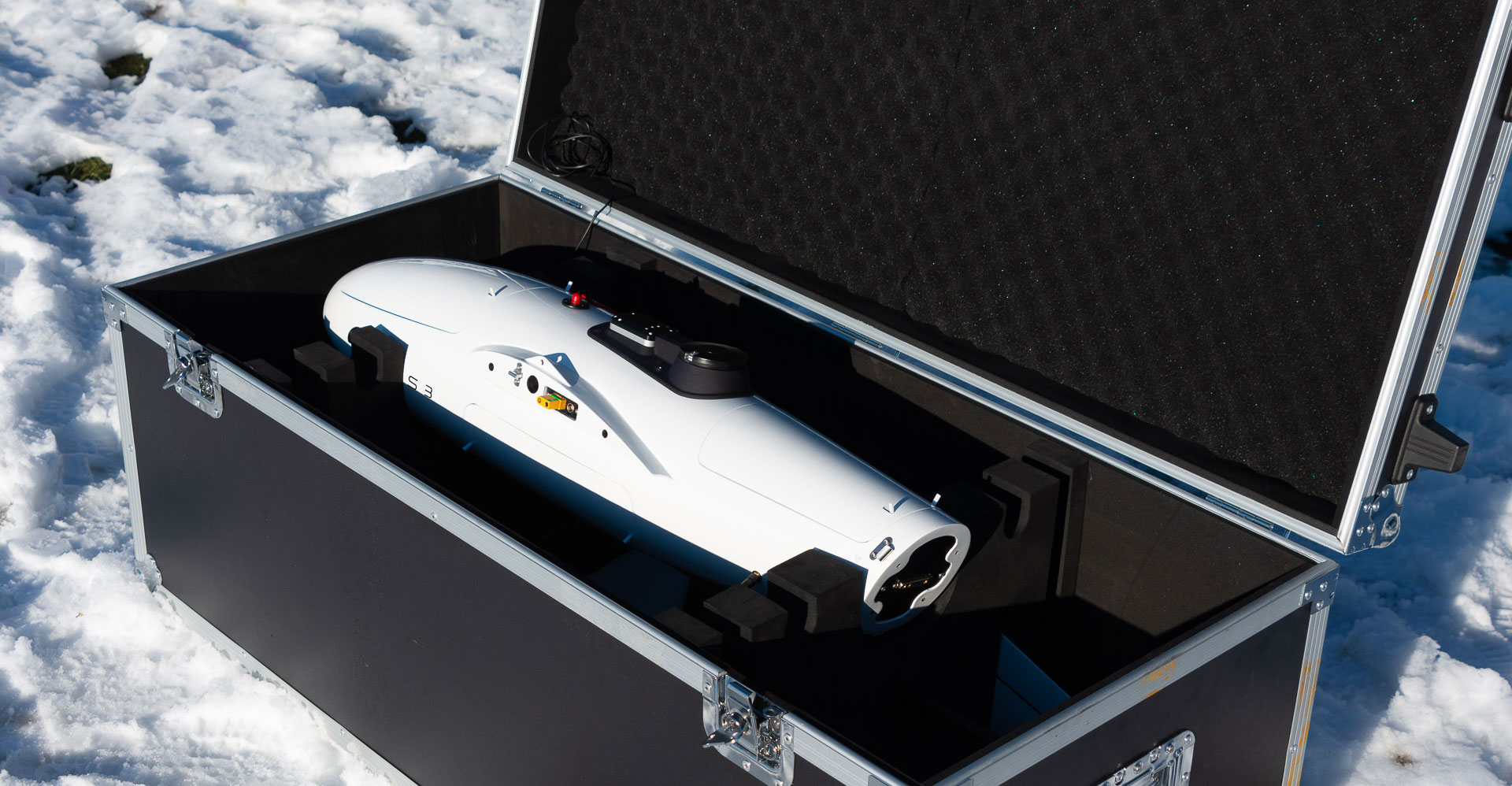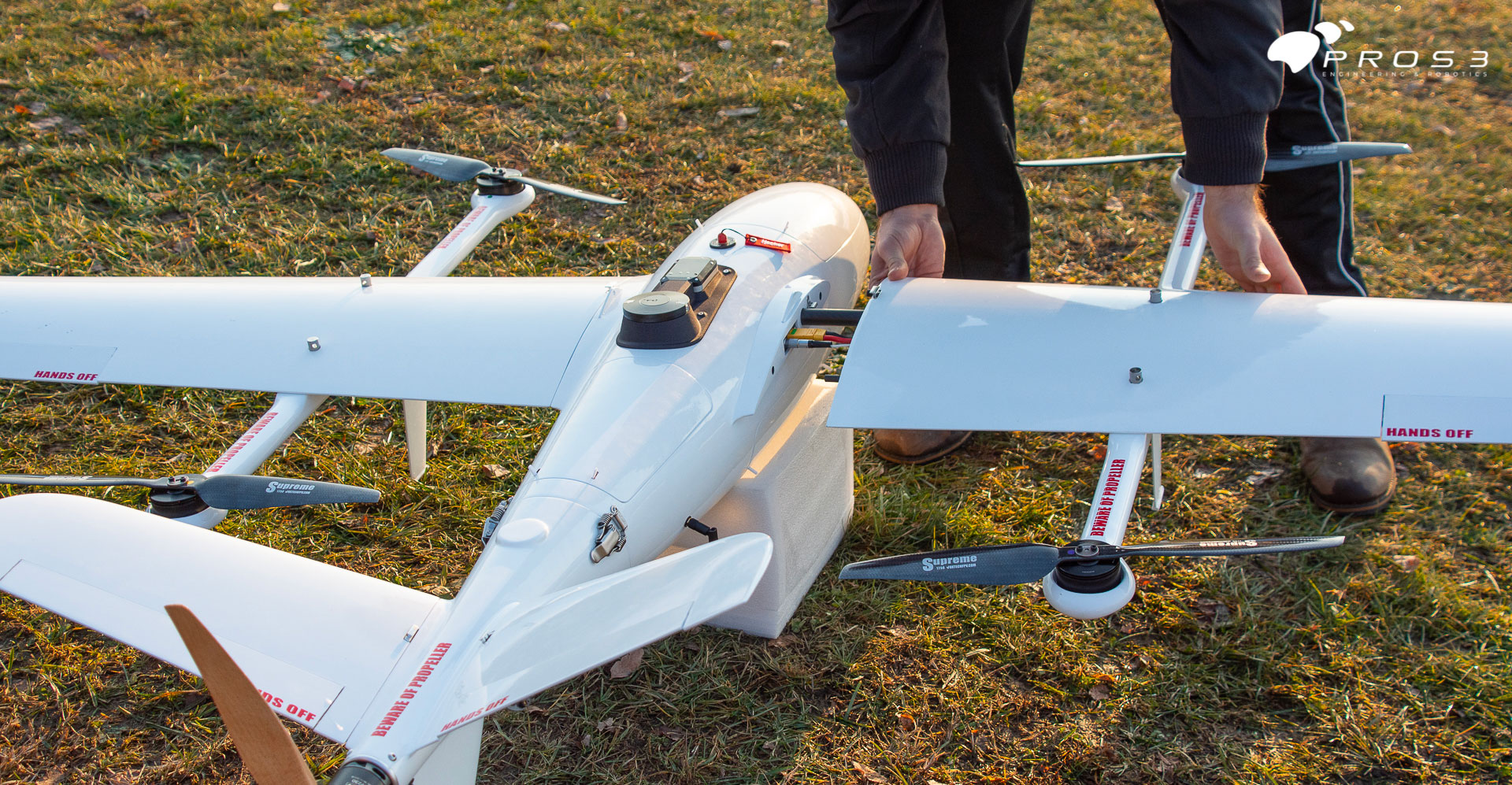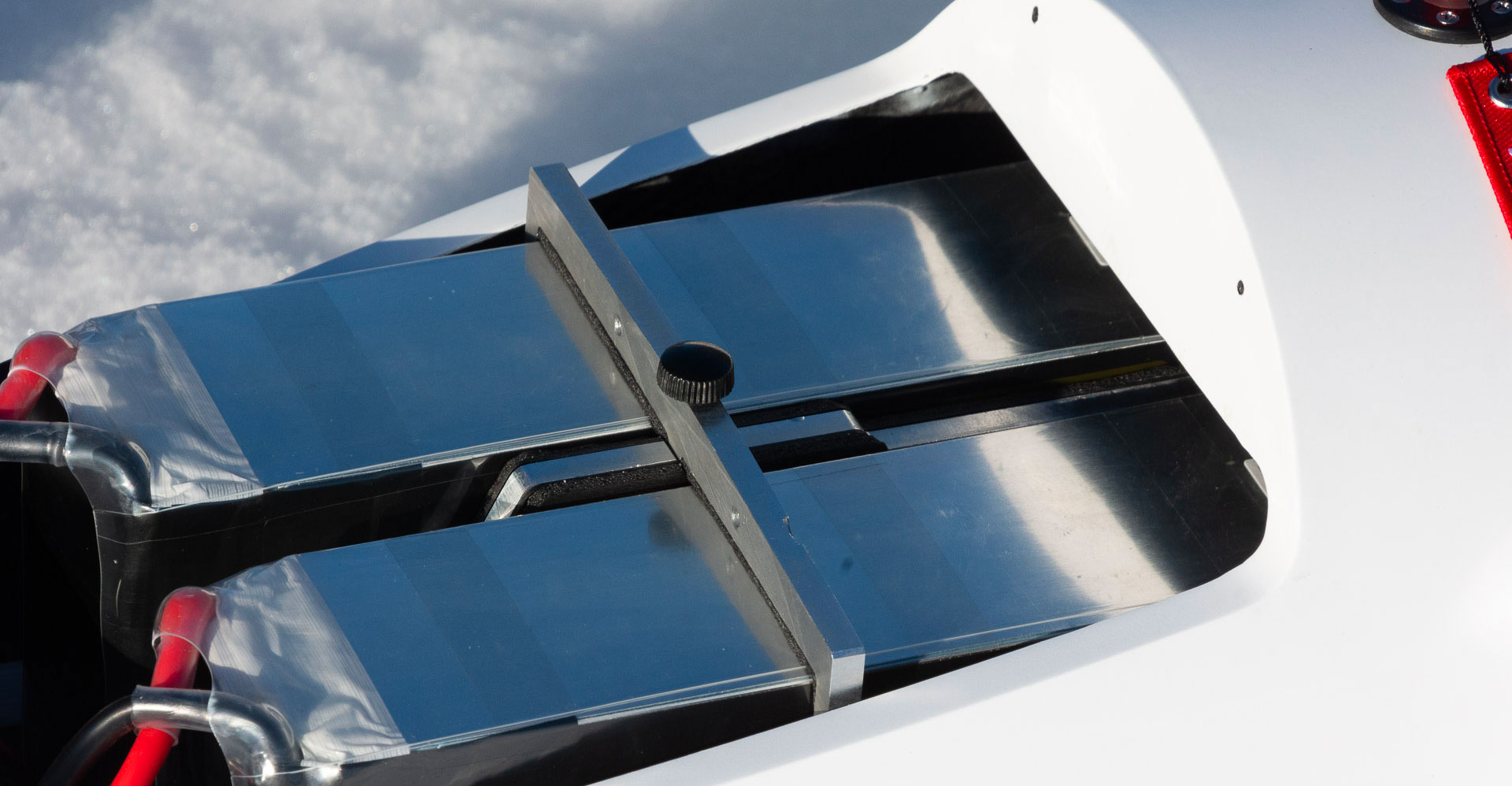ICON V2 MODEL YEAR 2022, THE VERSATILE PERFORMANCE DRONE
ICON V2 MY2022 is our versatile performance drone. It combines two souls: the versatile soul of the multirotor and the performance soul of the fixed-wing aircraft. Aerodynamic laws claim that an aircraft, because of its ability to sustain itself with a fixed wing, has a much higher aerodynamic efficiency than those with a rotary wing. This difference translates into the lower amount of energy required for the fixed-wing aircraft to fly: with the same “energy fill,” the aircraft is able to fly for longer than a helicopter can, although the latter is much more versatile because of its ability to fly fixed-point, land and take off vertically.
ICON V2 MY2022 WAS BORN FROM THIS CONCEPT TO BE THE MINI-PLANE EQUIPPED WITH THE ROTORS OF A QUADRICOPTER, CAPABLE OF TAKING OFF AND LANDING VERTICALLY.
Switching from one flight mode to another is a difficult operation and must be controlled byvery sophisticated electronics, thanks to which it becomes a like child’s play. In the case of operating in assisted flight mode, switching from fixed-point flight to translational flight and vice versa is done by the simple switching of a switch; ICON V2 takes care of the rest.
Going into more detail, the transition from fixed-point flight to translated flight is made by activating the thrust motor and, once the minimum flight speed is exceeded, gradually shutting down the sustaining motors. Conversely, the transition from traversed flight to fixed-point flight is made by turning off the thrust motor, assuming a gabled attitude to brake and, as the minimum flight speed is approached, activating the sustaining motors.
WHAT SHOULD THE PILOT DO?
In automatic flight simply nothing: just observe and make sure you are operating safely and in compliance with current regulations. In assisted flight, the pilot begins the flight as if he were flying a quadricopter, and having reached a safe altitude, he activates the conversion switch and continues simply directing the drone where he wants. At the end of the mission, having reached the chosen landing site, the pilot activates the conversion switch again to switch to fixed-point flight mode and land the drone as if it were a quadricopter.
STURDY AND VERSATILE
Thanks to its all-carbon structure, ICON V2 MY2022 shows special qualities of versatility and strength. The support arms, also made of carbon, are joined to the semi-wings by a quick assembly maneuver. The original “Y” tail is joined to the structure by strong mechanical quick-connect links. The system is stored in its sturdy and compact case.
EASY TO OPERATE
ICON V2 MY2022 is extremely easy to operate. In most cases, the fully automatic mission allows the desired results to be achieved without operator intervention. In the event that the pilot feels he or she needs to take control of the flight, the control logic makes this particularly easy.
In the fixed-point flight phase, ICON V2 behaves exactly like any other large multirotor; it is controlled using classic position- and altitude-controlled modes. During the translated flight phase ICON V2 becomes a full-fledged fixed-wing drone. The sophisticated control laws of the autoguidance system make manual piloting very simple: the pilot simply directs the drone where he or she wants without worrying about complying with the rules of aerodynamics; the autopilot takes care of that.
ICON V2 MY2022 has a large and flexible cargo bay that can be allocated either for the installation of sensors for “observation” missions or to accommodate small cargo for transport missions. ICON V2 is then expressly configured according to customer specifications.
MAPPER VERSION
Reference missions: aero-photogrammetry to the visible and multispectral
Camera to the visible:
26 Mpx aero-photogrammetric camera, aps-c sensor with 25 or 35 mm lens
36.4 Mpx aero-photogrammetric camera, Full Frame 35.9x24mm sensor with 25, 35 or 40 mm lens
61 Mpx aero-photogrammetric camera, Full Frame 35.9x24mm with 25, 35 or 40 mm lens
45° oblique camera for 3D aero-photogrammetry, 5 24.4 MP APS-c sensors 120 MP total resolution, 25 or 35 mm lens
Multispectral chambers:
Altum PT Pancromatic sensor, Blue 475(32), Green 560(27), Red 668(14), Red Edge 717(12), NIR 842(57) + thermal 320×256 with incident light compensation sensor.
Red EDge P panchromatic sensor, blue 475 (32), green 560(27), red 668(14), red edge 717(12), near-IR 842 (57) + RGB 5.1 MP with incident light compensation sensor
Red Edge Mx Dual Camera imaging system, Coastal blue 444(28), blue 475(32), green 531(14), green 560(27), red 650(16), red 668(14), red edge 705(10), red edge 717(12), red edge 740(18), NIR 842(57) 1.2 MP per band with incident light compensation sensor, RGB 3.6 MP
Red EDge MX, blue 475(32), green 560(27), red 668(14), red edge 717(12), NIR 842(57) 1.2 MP per band with incident light compensation sensor, RGB 3.6 MP
SAR VERSION
Reference missions: search and rescue, surveillance
Gyro-stabilized turrets:
X80 – 40x optical zoom + 2x digital zoom
Hummingbird 212 – 20x optical zoom + 2x digital zoom, 640×480 thermal sensor
NightHawk2 UZ – 20x optical zoom + 2x digital zoom, 1280×720 thermal sensor
TRANSPORT VERSION
Reference mission: transportation of small goods
Maximum load 2 KG with flight duration of 60 minutes.
Maximum volume 3 dm3
Wingspan: 2.5m
Length: 1.26 m
Empty weight: 7.4 kg (without batteries
Maximum takeoff weight 13 kg
Airframe: carbon/herex
Motors: 5, brushless
Battery: 2x 6s 22000 mAh / 2x 6s 25000 mAh
Dimensions and weight of carrying case: 1300x530x470 – 22 kg
Autopilot: triple IMU with temperature stabilization
Triple magnetometer (compass)
Anemometer sensor with Pitot tube
Dual barometric sensor
Standard GPS receiver: 50 ch, NEO m8m
GPS logger RTK/PPK: EMLID each M+ (Mapper) (optional)
Manual control unit: 2 hall effect joysticks, 6 programmable buttons, sunlight visible screen with flight programming capability, real time video from on-board camera (latency <50 ms)
Radio link, 2.4 GHz CE compliant range >15 KM LOS
Plane flight modes: Full Auto, Cruise, Fly-by-wire, RTL, guided
VTOL flight modes: Full auto, Loiter, AltHold, Stabilize, RTL
Geofence: standard and custom, 3D
ADS.-B Receiver
Control and scheduling software compatibility: Mission Planner (https://ardupilot.org/planner/docs/mission-planner-installation.html), QGround Control (http://qgroundcontrol.com/), UGCS (https://www.ugcs.com/)
Maximum flight duration in no wind, sea level standard conditions: 120 min
Maximum cruise speed: 27 m/s – 97 km/h
Optimum cruise speed: 23 m/s – 83 km/h
VTOL/plane mode climb speed: 2 m/s
Conversion duration: VTOL -> Plane: 5s – Plane -> VTOL: 10 s
Altitude hold in straight cruise flight : +/- 2 m
Course hold in straight cruise flight: +/- 1°
Position hold during flight in VTOL mode
(no wind): +/- 0.4 m
Wind: 8 m/s VTOL – 14 m/s Plane
Temperature range: -20/+45°C



